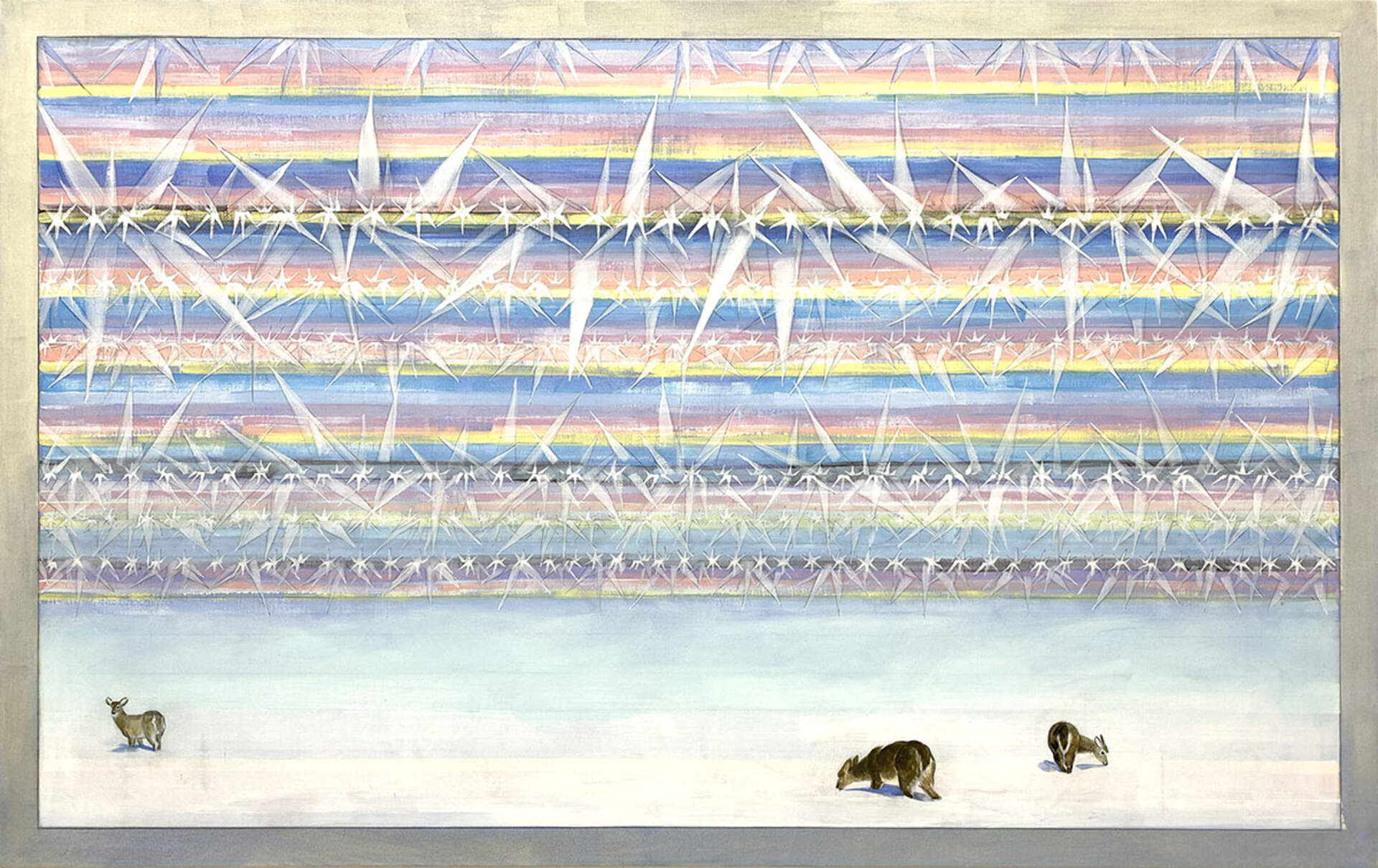Mike Glier (b. 1953)Ice Splitting Light v.2
2023
acrylic and pencil on linen
45 x 72 inches
Courtesy of Downing Yudain, North Stamford, CT
MOTIF, REPETITION, AND RHYTHM
MG: This Burchfield, Sun and Snowstorm, makes me cold! I was an art teacher for a long time, so forgive me if I nerd out and talk about how Burchfield made me shiver, involuntarily. First of all, he uses converging lines at the bottom of the picture to swoop me right into the middle of the maelstrom, where I stand flanked by two trees, whose contours are broken by blasts of swirling strokes. The swirl is a motif, which repeats throughout the bottom half of the picture, suggesting that there is no place to hide from the cold wind. There is another motif in the background, a short spiky wiggle in blue-green, that creates a restless background. This same anxious wiggle is repeated in the central yellow sunburst, which glows with harsh winter light. It’s typical of Burchfield to settle into a few motifs, the swirl and wiggle in this case, and then repeat them rhythmically throughout the composition. Few artists use motifs as effectively to create continuity and movement in their pictures. On this account, he is the equal of Rembrandt and van Gogh.
NW: Burchfield’s motif for blinding light during a blizzard was meant to convey “a feeling of continuous roar & clash” where “we don’t know where to look.” The sun battles the wind’s fury in a maelstrom of snow. A few years ago, when Burchfield’s granddaughter Peggy visited during a wild winter storm, we stood in front of this painting for a selfie because it epitomized what she experienced trying to travel to the museum.
MG: Ice Splitting Light is as cold but not as furious! I used an acute angle arranged radially in three dimensions around a center point to create a simple crystal. Like the swirls and wiggles in Sun and Snowstorm, the picture is built from a motif that is repeated with varying rhythms. Repeating elements and varying the intervals between them is a good way to represent the pulse of the living world.
